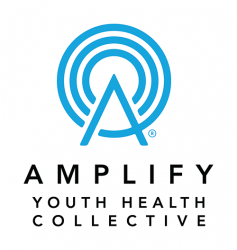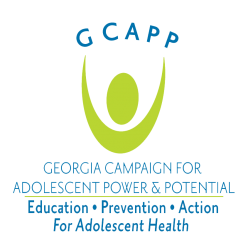Training
LGBTQIA+ Student Rights and Advocacy in Michigan Schools
LGBTQIA+ students have the right to a safe and healthy learning experience in the state of Michigan. Students and educators, however, are often unaware of these rights. In this training, participants will identify and state the implications of key legal and policy issues affecting LGBTQIA+ students and safe school environments in Michigan.
In this training, participants will:
- Review relevant and current data related to LGBTQIA+ students.
- Examine federal and state law and policy.
- Discuss district-level decisions and the Michigan Department of Education's Statement and Guidance on Safe and Supportive Learning Environments for LGBTQ Students.
- Examine law around GSA clubs.
- Identify current needs and action planning.
In person Online
Age Group(s) - Grades K-2, Grades 3-5, Grades 6-8, Grades 9-10, Grades 11-12
Topic(s) - LGBQ+ identities, Transgender and gender expansive identities, Values
Professional Learning Standards for Sex Education (PLSSE) Indicators
LGBQ+ Identities Indicators - Indicator 1 (K-12): Explain how availability of supportive school staff, presence of Gay-Straight Alliances (GSAs), LGBQ-inclusive curricular resources, and the presence of comprehensive, enumerated anti-harassment school policies are related to improved school climate for students of all sexual orientations.
- Indicator 4 (K-12): Demonstrate the use of inclusive and affirming language. (S)
- Indicator 5 (K-12): Demonstrate the ability to intervene effectively in homophobic and other bullying comments and actions. (S)
- Indicator 6 (K-12): Explain three ways that LGBQ+ youth are at disproportionate risk for health disparities.
- Indicator 8 (K-12): Explain why it is essential to include positive portrayals of LGBQ+ people in lessons.
Transgender and Gender Expansive Identities Indicator - Indicator 1 (K-12): Explain how availability of supportive school staff, presence of Gay-Straight Alliances (GSAs), gender-inclusive curricular resources, and the presence of comprehensive enumerated anti-harassment school policies are related to improved school climate for students of all gender identities.
- Indicator 2 (K-12): Demonstrate the use of inclusive and affirming language. (S)
- Indicator 6 (K-12): Explain three ways that transgender and gender expansive youth are at disproportionate risk for health disparities.
- Indicator 8 (K-12): Explain why it is essential to include positive portrayals of transgender and gender expansive people in lessons.
Values Indicators - Indicator 1 (K-12): Explain the differences between personal and universal values relating to sexuality.
Training
Building Self-Esteem and Body Confidence
After this workshop, participants will be able to explain appearance ideals that students encounter and where pressure to achieve them comes from.
This training is designed for:
- Teachers
- Substitute Teachers
- Counselors
- Coaches
- Parents
- Clergy
- Community Workers
- Educators
In person Online
Cost - $0.00 -$2500.00, depending on location of participating organization. Please contact us at contact@teenhealthms.org for more information.
Age Group(s) - Grades 6-8, Grades 9-10, Grades 11-12
Topic(s) - Puberty and adolescent development
State(s) - Alabama,
Alaska,
Arizona,
Arkansas,
California,
Colorado,
Connecticut,
Delaware,
Florida,
Georgia,
Hawaii,
Idaho,
Illinois,
Indiana,
Iowa,
Kansas,
Kentucky,
Louisiana,
Maine,
Maryland,
Massachusetts,
Michigan,
Minnesota,
Mississippi,
Missouri,
Montana,
Nebraska,
Nevada,
New Hampshire,
New Jersey,
New Mexico,
New York,
North Carolina,
North Dakota,
Ohio,
Oklahoma,
Oregon,
Pennsylvania,
Rhode Island,
South Carolina,
South Dakota,
Tennessee,
Texas,
Utah,
Vermont,
Virginia,
Washington,
West Virginia,
Wisconsin,
Wyoming
Professional Learning Standards for Sex Education (PLSSE) Indicators
Healthy Relationships Indicators - Indicator 1 (K-12): Describe three distinguishing characteristics between healthy and unhealthy relationships, involving family, friends, and/or romantic partners.
Puberty and Adolescent Development Indicators - Indicator 1 (K-12): Describe how puberty prepares the human body for the potential to reproduce.
- Indicator 2 (K-12): List three physical, three social, and three emotional changes that occur during puberty.
- Indicator 3 (K-12): Identify three practices that students can adopt for maintaining healthy habits beginning during puberty.
Training
What’s Triggering Our Teens? Intimate Partner Violence Edition
Participants will gain knowledge of how intimate partner violence impacts the mental, sexual and reproductive health of young people who witness and/or experience it. Participants will brainstorm strategies to intervene and learn about local, state, and national resources.
This training is designed for:
- Educators
- Teachers
- Substitute Teachers
- Counselors
- Coaches
- Parents
- Clergy
- Community Workers
- Healthcare Providers
- Healthcare Staff
- Clinicians
In person Online
Cost - $0.00 -$2500.00, depending on location of participating organization. Please contact us at contact@teenhealthms.org for more information.
Age Group(s) - Grades 6-8, Grades 9-10, Grades 11-12
Topic(s) - Healthy relationships
State(s) - Alabama,
Alaska,
Arizona,
Arkansas,
California,
Colorado,
Connecticut,
Delaware,
Florida,
Georgia,
Hawaii,
Idaho,
Illinois,
Indiana,
Iowa,
Kansas,
Kentucky,
Louisiana,
Maine,
Maryland,
Massachusetts,
Michigan,
Minnesota,
Mississippi,
Missouri,
Montana,
Nebraska,
Nevada,
New Hampshire,
New Jersey,
New Mexico,
New York,
North Carolina,
North Dakota,
Ohio,
Oklahoma,
Oregon,
Pennsylvania,
Rhode Island,
South Carolina,
South Dakota,
Tennessee,
Texas,
Utah,
Vermont,
Virginia,
Washington,
West Virginia,
Wisconsin,
Wyoming
Professional Learning Standards for Sex Education (PLSSE) Indicators
Healthy Relationships Indicators - Indicator 1 (K-12): Describe three distinguishing characteristics between healthy and unhealthy relationships, involving family, friends, and/or romantic partners.
- Indicator 2 (K-12): Explain three ways that healthy relationships can positively impact personal well-being.
- Indicator 5 (K-12): Describe three ways to help students set and respect personal boundaries in relationships.
Training
Sexual Health Education Essentials
Sexual Health Education Essentials is a foundational training meant to prepare sexual health educators, school personnel, and other youth work professionals to support young people. Training content is data-driven and aligned with best-practices in the field of adolescent sexual health promotion. Topics covered during pre-work and live training include holistic sexuality, adolescent growth & development, reproductive health, responding to sensitive questions, values in sexual health education, consent, contraception, and more. Sexual Health Education Essentials is recommended for anyone new to the field of sexual health education or for trusted adults working with young people in any capacity who wish to gain knowledge and strengthen their skills.
In person
Cost - $150/registrant, $3,000/organization
Age Group(s) - Grades 3-5, Grades 6-8, Grades 9-10, Grades 11-12
Topic(s) - Contraception, pregnancy, and reproduction, Creating an inclusive and affirming learning environment, Disclosure, Effective teaching strategies, LGBQ+ identities, Puberty and adolescent development, Responding to challenging questions, Sexual and reproductive anatomy and physiology, Values
Professional Learning Standards for Sex Education (PLSSE) Indicators
Contraception, Pregnancy, and Reproduction Indicators - Indicator 1 (6-12): Explain fertilization, implantation, conception, and how pregnancy occurs.
- Indicator 3 (6-12): Describe the differences in mechanisms of action and access between emergency contraception and the abortion pill.
- Indicator 4 (6-12): Explain methods of contraception, including the latest medical advances that are popular among young people.
- Indicator 6 (6-12): Identify three federal and/or state laws that impact young peoples’ access to effective reproductive and sexual health care (e.g. age of consent for services, confidential access to health care services, and access to condoms)
Creating and inclusive and affirming learning environment Indicators - Indicator 1 (K-12): Demonstrate three techniques to create an inclusive and affirming learning environment. (S)
Disclosure Indicators - Indicator 1 (K-12): Describe the importance of teachers’ maintaining professional boundaries when teaching sex education.
- Indicator 2 (K-12): List three factors to consider regarding personal disclosure when teaching sex education
- Indicator 3 (K-12): Demonstrate how to reduce the impact of educators’ passive and/or active personal disclosure on the educational environment. (S)
- Indicator 4 (K-12): Explain the roles and responsibilities of a mandated reporter.
- Indicator 5 (K-12): Explain the state- and district-mandated reporting requirements and procedures.
Effective Teaching Strategies Indicators - Indicator 1 (K-12): Demonstrate the ability to build rapport with students. (S)
HIV and other sexually transmitted diseases/infections Indicators - Indicator 1 (6-12): Describe HIV and three common STDs/STIs, and how each can and cannot be transmitted.
- Indicator 2 (6-12): Explain that many STD/STIs do not cause symptoms and the only way to know if you have one is to be tested.
LGBQ+ Identities Indicators - Indicator 2 (K-12): Define sexual orientation and sexual identity, including that everyone has both.
- Indicator 3 (6-12): Explain the difference between sexual orientation, sexual behavior, and sexual identity.
- Indicator 4 (K-12): Demonstrate the use of inclusive and affirming language. (S)
Puberty and Adolescent Development Indicators - Indicator 1 (K-12): Describe how puberty prepares the human body for the potential to reproduce.
Responding to Challenging Questions Indicators - Indicator 1 (K-12): Explain three reasons why it is important to respond to every question students ask when teaching sex education.
Sexual & Reproductive Anatomy and Physiology Indicators - Indicator 2 (K-12): Demonstrate the ability to use medically accurate terms for sexual and reproductive anatomy, including all external genitals. (S)
- Indicator 3 (K-12): Explain the function of the individual sexual and reproductive body parts and how they typically work.
Transgender and Gender Expansive Identities Indicator - Indicator 2 (K-12): Demonstrate the use of inclusive and affirming language. (S)
- Indicator 3 (K-12): Define gender identity and sex assigned at birth.
- Indicator 4 (K-12): Explain how gender identity and gender expression are distinct from each other and from sexual orientation.
Values Indicators - Indicator 1 (K-12): Explain the differences between personal and universal values relating to sexuality.
- Indicator 2 (K-12): Describe how verbal and nonverbal expression of personal values, and comfort with topics related to sex education, could impact one’s teaching
- Indicator 3 (K-12): Explain the importance of educators refraining from sharing their personal values when implementing sex education.
- Indicator 4 (K-12): Demonstrate the ability to respond effectively to students’ values-based comments and questions. (S)
Training
Barriers to Abortion Access for Michigan Minors
Unplanned pregnancies are challenging for any population, but particularly for adolescents. When dealing with issues like pregnancy and abortion, teens are often denied the tools to make informed and autonomous decisions. This training will work with participants to identify and set aside individual judgments in order to provide unbiased support to pregnant adolescents. The training will also cover mandatory parental involvement laws, judicial bypass, and how to help minors navigate the judicial bypass system.
In this training, participants will:
- Identify own biases around abortion and teen pregnancy.
- Gain an understanding of unique barriers teens face to access abortion services.
- Define and review parental involvement laws and judicial bypass.
- Define requirements for judicial bypass.
- Describe the judicial bypass process.
- Discuss findings from MOASH's Michigan Youth (MY) Rights project.
In person Online
Age Group(s) - Grades 6-8, Grades 9-10, Grades 11-12
Topic(s) - Sex education in schools, Values
Professional Learning Standards for Sex Education (PLSSE) Indicators
Sex Education In Schools Indicators - Indicator 1 (K-12): Describe three health (e.g. physical, social and/or emotional) and/or academic benefits of sex education for young people
- Indicator 2 (K-12): Describe state and/or district laws, policies, and standards that relate to sex education where one teaches.
Values Indicators - Indicator 1 (K-12): Explain the differences between personal and universal values relating to sexuality.



